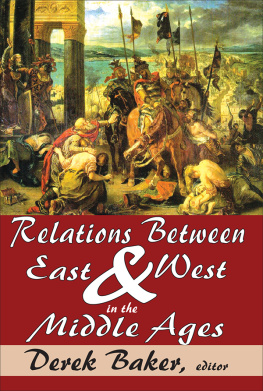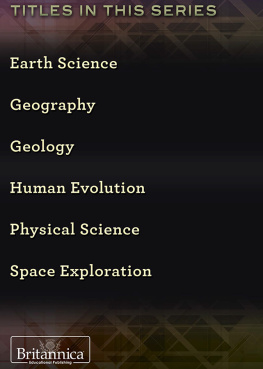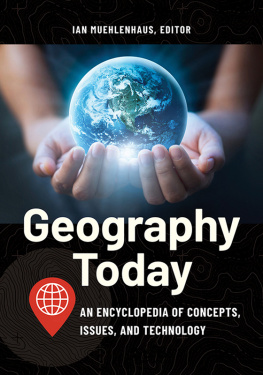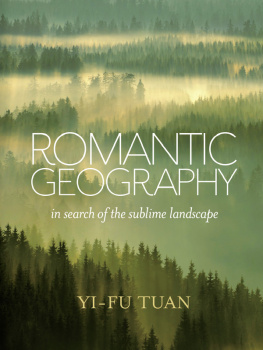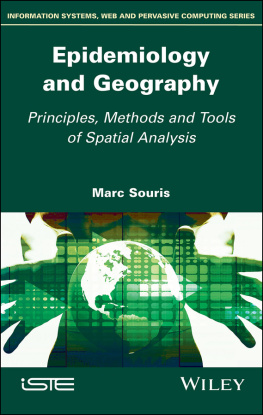First published 1967 by Transaction Publishers
Published 2017 by Routledge
2 Park Square, Milton Park, Abingdon, Oxon OX14 4RN
711 Third Avenue, New York, NY 10017, USA
Routledge is an imprint of the Taylor & Francis Group, an informa business
All rights reserved. No part of this book may be reprinted or reproduced or utilised in any form or by any electronic, mechanical, or other means, now known or hereafter invented, including photocopying and recording, or in any information storage or retrieval system, without permission in writing from the publishers.
Notice:
Product or corporate names may be trademarks or registered trademarks, and are used only for identification and explanation without intent to infringe.
Library of Congress Catalog Number: 2007011682
Library of Congress Cataloging-in-Publication Data
Minshull, Roger M.
Regional geography: theory and practice / Roger Minshull.
p. cm.
Originally published: Chicago: Aldine Pub. Co., 1967.
Includes bibliographical references and index.
ISBN 978-0-202-30956-9 (alk. paper)
1. GeographyMethodology. I. Title.
G70.M5 2007
910.02dc22
2007011682
ISBN 13: 978-0-202-30956-9 (pbk)
One purpose of this book is to collect and set down those ideas so often discussed in classrooms, libraries and lecture halls yet which seem to have no traceable sources. Thus it is possible to thank only in a general way many people who originated, developed and helped collect together some of these ideas. In the long process of finding material, sorting, writing and re-writing, help is given by many people in completely different ways, but each may be critical at a certain point. I would like to thank, in this connection, the many librarians and book dealers who seemed to enjoy tracing the more obscure articles and books, for their work was vital, and many went out of their way to help.
More particularly, I am very grateful to Mrs M. M. Tyson for her most accurate typing, and to Mrs K. M. King, B.A., for drawing the maps and diagrams, and making my best efforts seem very crude. Most of all I welcome this opportunity to acknowledge my debt to Mr A. A. Arnold, M.A., for his early encouragement, to Dr J. M Houston for some rigorous training and for reading the manuscript, and to Professor W. G. East, editor of this series, for giving so much of his time to improve that first lengthy, untidy manuscript, and for his generous help ever since.
R.M.M.
There is only one regionthe surface of the earthon which mankind finds its home. Yet, although much effort is devoted by geographers towards the study of this diversified environment as a whole, it has long seemed necessary, by the methods of special or regional geography, to study its component parts. And although nature abhors lines, geographers might appear to adore them, so busily do they engage themselves in delimiting on their maps allegedly significant areas called regions. As a result, every student of geography in school, college of education and university has been taught, read books and attempted to answer questions on, regional geography.
It must be admitted that both the teaching and writing of regional geography have been under fire from critics, not least from geographers themselves, who question the methods, objectives and achievements of those who practise it. Without doubt, some of these criticisms are valid: on an unsure philosophical basis some regional geography, as taught and as written, presumes too much and achieves too little. To some it may appear as an omnium gatherum of information about particular areas for which is dubiously claimed regional status. This last is no easy matter to substantiate, for there are clearly very many different kinds of regions of differing scale and rank, conceived on the basis of specified criteria and for a variety of purposes. It is perhaps not fully realised, especially by the younger students, that regions are often conceptualcreations of the geographers mindrather than intrinsic and evident realities of the landscape. Some critics, forgetful of a number of regional studies of acknowledged excellence, seek to shrug off this traditional charge on geographers energies by recommending, as more intellectually rewarding, the study of systematic or topical geography, regional problems, and particular areas by way of selected themes.
Mr Roger Minshull, the author of this book, was himself exposed to regional geography as a student at the University of Oxford and has for some years been required to teach it. To meet his own difficulties, doubts and needs, he has grappled with the study of its methods, concepts and objectives. He has been at pains to discover the method and content of textbooks in current usea revealing exercise. He has succeeded in clarifying much that has confused many, has underlined shortcomings and pinpointed exaggerated claims. Indeed, he succeeds in showing both the limitations and possibilities of regional geography as a major part of the geographers craft. In addition, having shown why regionalism stands apart from academic geography, he recalls and reviews Derwent Whittleseys original contribution to regional theory in respect of the compage which, it might appear, has not received the attention it deserves. By reviving this obsolete though appropriate term as a substitute for region, Whittlesey outlined a distinctive method by means of which regional geography might more effectively develop. Not only the younger student, who may well be confused, but also the graduate student, seeking to develop new methods, of the quantitative kind maybe, will be grateful to Mr Minshull for the guidance which he here offers to clearer thinking and better understanding. When, as long ago as 1887, Sir Halford Mackinder asserted that it is especially the character of geography that it traces the influence of locality, that is, of environment varying locally, he focused attention on the central purpose of geography. For Whittlesey, too, regional geography was the keystone of the geographic arch.
To this end, namely the understanding of the wholeness of country by way of its distinguishable parts and as environments of which we are part, conceptual regions can greatly contribute as tools. For C. C. Carter, regions were good servants, bad masters; for Professor Spate they are isolates for study. Not that the region provides an easy way to understanding: there indeed is the rub. As the French school of la gographic humaine exemplified long ago, regional geography is a highly exacting task, calling for much scientific knowledge and cartographic skill and even more literary art. There is no suggestion in this book, nor should there be, that the writing and teaching of regional geography should be either rigidly conceived or uniformly presented. Rather, as the study of geography increasingly appeals as a liberal education and increasingly affirms the value of its applications, the way lies open to new methods and to experimentation. And success in this challenging task will demonstrate, beyond all else, what geographers can do better than other scholars and scientists.
W.G.E.


